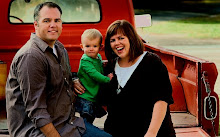

 The Berlin Wall always was a symbol of the superiority of freedom over oppression and of the free market over a controlled economy. The symbol is gone, but those lessons must remain forever.
The Berlin Wall always was a symbol of the superiority of freedom over oppression and of the free market over a controlled economy. The symbol is gone, but those lessons must remain forever.November 9th marked the 20th anniversary of the day Germans, from East and West, began to tear down the wall and reunify. It was a day in which the entire world seemed to exhale after decades of a tense Cold War many felt would last forever. It was, for many, the beginning of the real end to World War II, defined for them by years of war, followed by more than 40 years of oppression and occupation. And it was the beginning of a more chaotic world, defined by ideologies and terrorist threats rather than a superpower standoff.
When the wall went up, it was because so many people were fleeing to the West that the obvious advantages to freedom and capitalism over communism were becoming embarrassing to the East. Over the ensuing years, those differences grew only starker, but they were mostly hidden from view.
It was fitting, then, that once the wall came down it became a part of the capitalist economy itself. It was broken into fragments and sold as souvenirs. Many pieces sit in American homes today. These lessons are important. Many young people in Germany today, particularly in the East, have begun to romanticize life under the old regime. A recent poll by the German government found that 57 percent of people in the East said communist rule was, on balance, mostly positive.
If the world would always remember the wall — the real wall with its Stasi secret police and its gunshots for people who tried to climb from East to West — the way forward would be much more clear.
Checkpoint Charlie is where we always entered. Checkpoint Charlie was one of the main gateways for crossing between the two halves of Berlin during the Cold War. The naming of the checkpoints was based on the phonetic alphabet, and as this was the third such checkpoint it was given the name of Charlie.It became a symbol of the Cold War - representing the division of East & West - and was seen as a gateway to freedom for the East Germans. Checkpoint Charlie was on Friedrichstrasse, near Kochstrasse. It was the only crossing between West Berlin and East Berlin that could be used by Americans and other foreigners, and by members of the Allied Forces. The other six checkpoints were for residents of West Berlin or West Germany
While living in Germany, we visited the Berlin wall several times. Jen and Mindi went with us a couple of times. We actually went the first time as a shopping trip into East Berlin. The cost of goods were so cheap. However, our trips were also times of teaching and learning. Both the girls noticed the vast difference in the buildings, people and atmosphere of the east side. Jen and Mindi both commented that that the people just didn't seem as happy and that there were no colors in anything. We returned to the United states in July of 1989 and the Berlin Wall came down in November of 1989. Friends still stationed in Germany sent us a piece of the Wall and it sits in our home today. I hope I have taught my children the importance of our freedoms. I hope that they never forget their experience of living on foreign soil. I only pray that the youth of today remain resolute in the fight for freedom and liberty.
While living in Germany, we visited the Berlin wall several times. Jen and Mindi went with us a couple of times. We actually went the first time as a shopping trip into East Berlin. The cost of goods were so cheap. However, our trips were also times of teaching and learning. Both the girls noticed the vast difference in the buildings, people and atmosphere of the east side. Jen and Mindi both commented that that the people just didn't seem as happy and that there were no colors in anything. We returned to the United states in July of 1989 and the Berlin Wall came down in November of 1989. Friends still stationed in Germany sent us a piece of the Wall and it sits in our home today. I hope I have taught my children the importance of our freedoms. I hope that they never forget their experience of living on foreign soil. I only pray that the youth of today remain resolute in the fight for freedom and liberty.







.jpg)


.jpg)